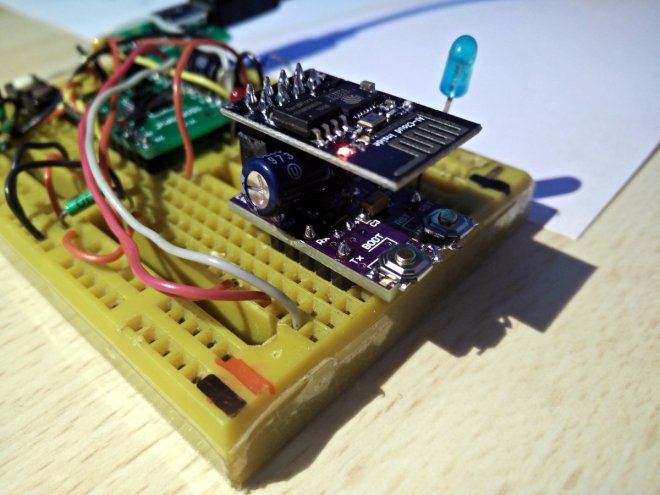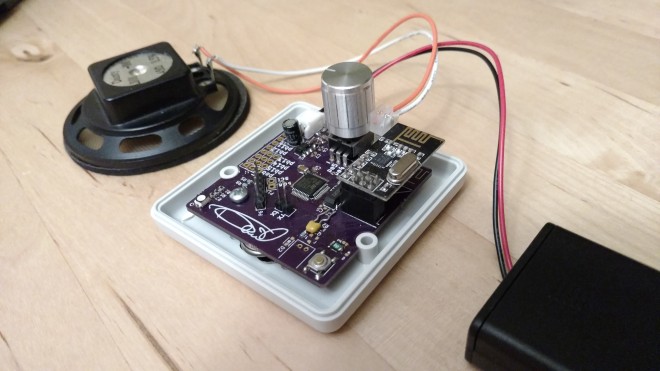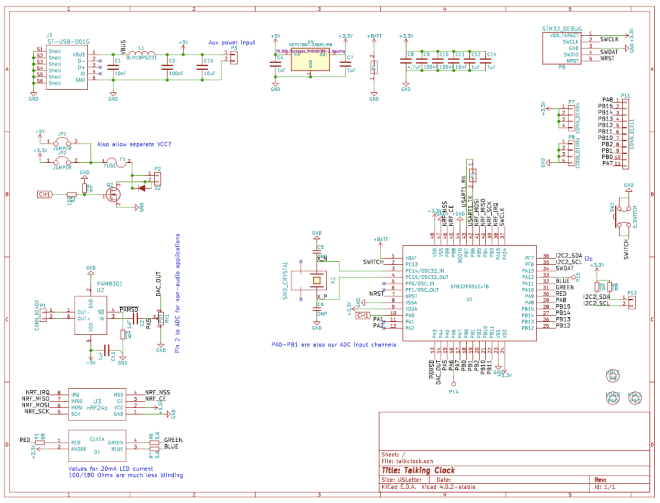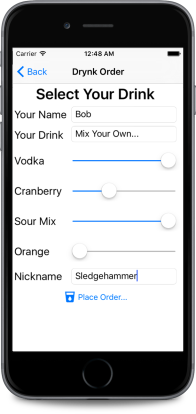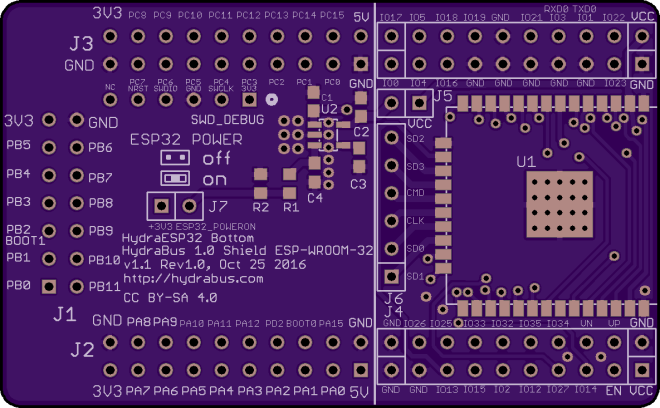From debug messages to the fundamental ‘hello world’, serial communication does it all over three little wires. Now imagine being able to cut the cord to your next microcontroller project and use your phone as a VT100 terminal. This was the premise of [Ondřej Hruška]’s Wireless Terminal Project where he took an ESP8266 and added an in-browser terminal emulator which can be accessed…
iot
Hackaday Prize Entry: WiFi ePaper
[Frank Buss] designed an electronic version of a sticky note: a WiFi enabled, solar-powered ePaper, with magnets embedded in the casing. It’s based on the new ESP32, and the idea is that you can update it via your smart-phone or over the internet via a cloud app to show any message you want. Being an…
Mesh networking for sensor grids
Mesh networking board by Daniel on Hackaday.io:
Low-power mesh networking for small sensor grids
Tiny MQTT-interoperable broadcast mesh networking with simple radios
This project is a low-resource mesh networking stack and mote with battery-powered routers based on state synchronization. The target is for the stack to use less than 2kb SRAM. Nodes use low power listening and an adaptive gossip protocol to synchronize key/values pairs with each other without relying on explicit routing or per-node addressing.
For example, a light might transmit (/lamp, {“state”:”on”}) to the mesh. Write (/lamp, {“state”:”off”}) to the mesh, and the lamp application will notice. The powerful but simple state synchronization primitive allows you to update the state of the mesh to update the world, and update the state of the world to express the same on the mesh. Trivially bridged to a private MQTT server and managed with off-the-shelf MQTT applications.
The design files and source code are available on Bitbucket:
dholth/mesh
Drinkro the Synchro Bartender
Synchro Labs created this project to demonstrate the use of the Synchro mobile app platform with custom hardware:
Drinkro Cocktail Robot
based on a Raspberry Pi 3 Model B and a custom-designed hardware board used to control four DC liquid peristaltic pump motors using two L293D dual H-bridge ICs
Hardware design files are available on GitHub:
 SynchroLabs/DrinkroHardware
SynchroLabs/DrinkroHardware
Video of Drinkro in action:
Internet connected gaming chair
Internet connected gaming chair (DX racer)
A very fun Internet of things project to control the custom RGB led over the internet from a web-browser or enjoy a nice sound reactive experience. Perfect for a smart home setup as you can easily connect this to any IoT platform or smart home software
Shortcuts:
- 0:45 – zPulse intro
- 1:00 – Designing the board in EagleCad
- 7:45 – Sending the board to a manufactured to get fabricated
- 8:40 – Applying soldering paste to the Board
- 11:25 – Baking the board and components
- 15:27 – Powering on the board for the first time!
HydraESP32: HydraBus and ESP-32S
The Espressif ESP32 features a 32-bit 240 MHz dual core processor with Wi-Fi and BLE. HydraBus created this shield for ESP-WROOM-32 or ESP-32S.
HydraESP32 v1.1 Rev1 with ESP-32S is alive
This shield can be used with or without HydraBus board, you can even cut HydraBus specific right side (on the line) to have a tiny ESP-WROOM-32 breakout board.
hydrabus has shared the board on OSH Park:
Ethernet PHY for Teensy 3.5 and 3.6
Paul Stoffregen of PJRC designed this shield as a Kickstarter reward earlier this year:
Ethernet Shield for Teensy 3.5 and 3.6
Please understand this shield has very limited software support at this time. However, Manitou’s early benchmarks show excellent performance we can someday hope to achieve as the software matures.
PaulStoffregen has shared the board on OSH Park:
The source code is available on GitHub:
 PaulStoffregen/k66_ethernet
PaulStoffregen/k66_ethernet
Qty Part Digikey
--- ---- -------
1 LAN8720A LAN8720A-CP-CT-ND
1 CAT811T CAT811TTBI-GT3OSCT-ND
1 Crystal, 25 MHz 535-13419-1-ND
1 Transformer, Pulse H1102FNL 553-2204-1-ND
1 Connector, RJ45 A102068CT-ND
1 Capacitor, 1nF, 2000V 709-1036-1-ND
2 Capacitor, 33pF 490-5936-1-ND
1 Capacitor, 470pF 490-1297-1-ND
3 Capacitor, 10nF 445-1260-1-ND
1 Capacitor, 22nF 490-8022-1-ND
3 Capacitor, 1uF 399-5090-1-ND
1 Resistor, 33, 1% 311-33.0LRCT-ND
4 Resistor, 49.9, 1% RMCF0402FT49R9CT-ND
4 Resistor, 75, 1% RHM75.0HCT-ND
2 Resistor, 330, 1% 311-330LRCT-ND
1 Resistor, 1.5K, 1% 311-1.50KLRCT-ND
2 Resistor, 12.1K, 1% P12.1KLCT-ND
1 Inductor, Ferrite bead 553-2387-1-ND
2 LED, Green 475-1410-1-ND
MicroUSB powered ESP8266 Oled Board
 Mike Rankin created this board with a tiny OLED display controlled by an ESP8266:
Mike Rankin created this board with a tiny OLED display controlled by an ESP8266:
MicroUSB powered ESP8266 OLED Board
I created this design as a challenge to make a design under 1″ x 1″ in size.
The hardware is an ESP-01 ESP8266 Wifi module, linear power supply, microUSB connector and a few oled display parts.
The design files and source code are available on GitHub:
 ESP8266_OLED
ESP8266_OLED
Here is a video of the assembly and operation:
miker has shared the board on OSH Park:
ESP8266 OLED Board Rev3
Olimex: ESP32-WROOM-32 WiFi/Bluetooth module is in stock
ESP32-WROOM-32 modules are in stock now! Again these are from the very first lot and with limited supply. To give chances to more developers to try them we will not allow more than 3 modules per order. This module is good only if you develop your own board. For these who are not good with […]
via ESP32-WROOM-32 WiFi/Bluetooth module is in stock! — olimex
PiAQ: Open Source Indoor Air Quality Sensor
UPDATE 2016-10-24: Dave Conroy of CRT Labs will present the PiAQ tonight at Chicago hackerspace Pumping Station: One
National Association of Realtors’ CRT Labs in Chicago has developed a Raspberry Pi HAT to make information about the air people are breathing more accessible:
The PiAQ
Open Source Indoor Air Quality Sensor for Raspberry Pi
Measurement Points:
- Temperature (SHT31)
- Relative Humidity (SHT31)
- VOC (Volatile Organic Compounds) (IAQ Core)
- Derived CO2 (IAQ Core)
- Barometric Pressure (MPL3115A2)
- Light Intensity (TSL2561)
- CO Concentration (MiCS-4154)
- NO2 Concentration (MiCS-4154)
- Sound Intensity (ADMP401)
Connectivity:
- FSK (RFM69HW 433/915MHz)
- WiFi (Particle Photon)
- Cellular (Particle Electron) (Coming soon)
- LoRa (Coming Soon)
- Akram Ali (@AKstudios)
- David Conroy (@dconroy)
- Christopher Coté (@entone)
Schematics and Eagle CAD Files are on GitHub:
 /PiAQ
/PiAQ
CRTLabs has shared the board on OSH Park:


